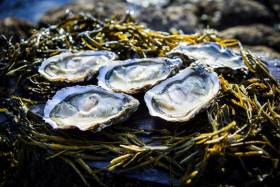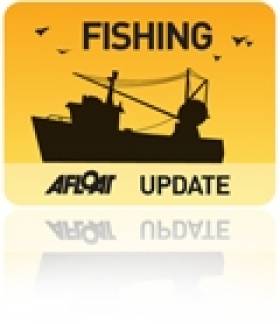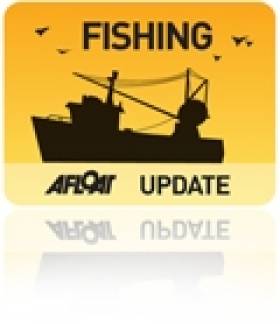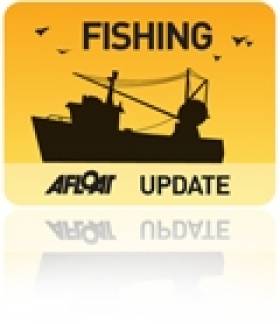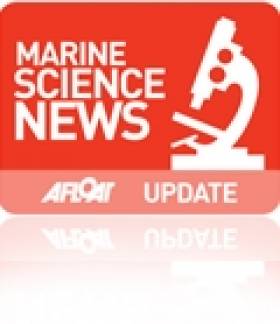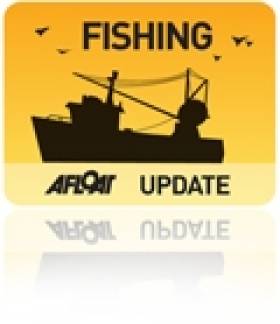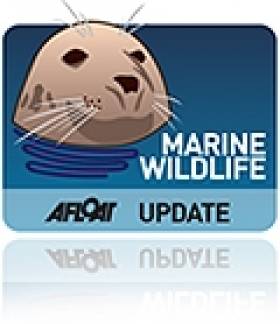Displaying items by tag: shellfish
Galway Hosts Shellfish Safety Conference This May
#Shellfish - Galway will host the 11th International Conference on Molluscan Shellfish Safety (ICMSS 2017) this summer from Sunday 14 to Thursday 18 May.
ICMSS 2017 will be hosted by the Marine Institute in association with the Food Safety Authority of Ireland, Sea Fisheries Protection Authority, Irish Shellfish Association, National University of Ireland and Bord Iascaigh Mhara in the Bailey Allen Hall at NUI Galway.
This 11th conference in the biannual forum series, subtitled ‘Protecting consumers, assuring supply, growing confidence’, offers an important multidisciplinary interface between regulatory, scientific and industrial representatives of the international molluscan food safety community. Unusual, emerging and novel shellfish risk factors will be discussed, offering new information and solutions.
ICMSS 2017 will include keynote presentations from acclaimed international experts in the area. A series of workshops will be held in conjunction with the event on Friday 19 and Saturday 20 May which will be of particular interest to shellfish safety professionals and students, including microbiologists, toxin chemists, toxicologists, marine scientists, regulators, policy makers, food safety specialists, environmental health officials, engineers, environmental managers, academics and undergraduate and postgraduate students.
More information can be found on the ICMSS 2017 website. The programme is available to as a PDF to read or download HERE.
Marine Institute Recruiting Temporary Laboratory Analyst For Foodborne Viruses In Shellfish
#Jobs - The Marine Institute requires a laboratory analyst to provide support to a two-year research project investigating norovirus, hepatitis A virus, hepatitis E virus and sapovirus concentrations in oysters.
The work will primarily involve laboratory based detection of the viruses in oysters using existing and proposed molecular procedures. In addition, there may be some elements of field work including sampling and environmental monitoring.
This temporary specified-purpose contract of employment is funded under the FIRM programme and will run for a duration of up to two years. The successful candidate will be on probation for the first six months.
To apply, a CV and letter of application summarising experience and skill set applicable to the position should be emailed to [email protected] or posted to Human Resources at the Marine Institute, Rinville, Oranmore, Galway. All correspondence for this post should quote reference LA-FIRM-Jan 2017
All applications for this post should be received by the Marine Institute before noon next Tuesday 7 February. Late applications will not be accepted.
A detailed job description is available from the Marine Institute website HERE.
Hong Kong Bans Donegal Oysters Over Food Poisoning Scare
#Seafood - Donegal's oyster industry has been hit by an import ban in Hong Kong over an outbreak of food poisoning.
According to The Irish Times, food safety investigators in the Chinese territory were notified by Irish authorities two weeks ago that the presence of norovirus was confirmed at a raw oyster processing plant in the north-eastern county that services the crucial Asian market.
Hong Kong subsequently banned the import of raw oysters from Donegal "for the sake of prudence". More HERE.
Shellfish Information Meetings Set For April & May
#Shellfish - The Food Safety Authority of Ireland (FSAI) is holding a series of Shellfish Regional Information Meetings around the coast in April and May.
The informal events, held in association with the Sea-Fisheries Protection Authority (SFPA), the Marine Institute and Bord Iascaigh Mhara (BIM), aim to provide an opportunity for all those involved in the shellfish industry to learn more about the role of the Shellfish Safety Monitoring Programme and how it assists industry to ensure that live bivalve molluscs placed on the market meet the highest standards of food safety.
This series of events will focus on microbiological classification of shellfish production areas but will also cover topics such as biotoxin and phytoplankton monitoring, phytoplankton sampling and viruses.
The first of these meetings takes place on 15 April at the SFPA office in Clonakilty, Co Cork, followed by 16 April at the Brehon Hotel in Killarney, Co Kerry.
On 27 April, the meeting moves to the Clann Ri Hotel in Letterkenny, Co Donegal, followed on 28 April at the Marine Institute in Oranmore, Co Galway.
The final meeting in the series will be held on 6 May at the FSAI office on Lower Abbey Street in Dublin city centre.
Registration for the events in Donegal, Galway, Cork and Dublin is from 1pm with a light lunch served. These sessions will run from 1:30pm to 4:30pm. In Kerry, registration is from 9:30am with tea/coffee served. The sessions will run from 10am to 1pm, when a light lunch will be served.
To register for one of these free half-day events, click on the any of the links above or phone Lorna Tallon on 01 817 1398.
New Road Threat To Endangered Connemara Mussels
#Mussels - "Major concerns" abound over an endangered species of freshwater mussel after a Connemara roadway project given the go-ahead by planners before its design was finalised.
According to The Irish Times, locals expected the road project to be an upgrade of the existing route between Oughterard and Maam Cross, but only found out later that a wholly new road would be built through their land via compulsory purchase orders.
Besides splitting a number of farms in Glengowna near Oughterard, the final scheme will impact on the catchment of the Owenriff river, one of Europe's oldest trout hatcheries and host to one of the world's most important populations of the freshwater pearl mussel Margaritifera margaritifera.
And according to an independent ecologist, the presence of the latter means planning permission cannot be legally granted in the way it has been decided.
The Irish Times has much more on the story HERE.
Fish Farm Pesticides Pose Threat To Shellfish Industry Say Researchers
#Fishing - The unregulated use of pesticides by fish farms poses a significant threat to both the shellfish industry and marine wildlife, according to new research findings.
The Irish Examiner reports on the study by the Norwegian Institute for Water Research, which confirms that pesticides used to kill sea lice infestations in aquaculture schemes often exceed environmental quality standards, or EQS.
Researchers studies samples from fish farms in Norway, which has no EQS system, and compared them to thresholds in the UK.
The study has been welcomed by lobby group Save Bantry Bay, whose secretary Alect O'Donovan claimed the value of shellfish to the local economy was more than €640,000 in 2009.
"It is ludicrous to put this at risk by adding more salmon farms and greater pesticide emissions that have the potential to wipe out stocks," he added.
Management of Ireland's shellfish fisheries and wildlife in general will be up for discussion at this year's Buckland Lecture in UCD next Wednesday evening (29 October), as Derek Evans writes in The Irish Times.
Malcolm Windsor, formerly of the North Atlantic Salmon Conservation Organisation, will be joined by Frank Convery, Ken Whelan and a panel of experts on the night to debate these important issues.
Marine Institute Heads New Advances In Shellfish Science
#MarineScience - The Marine Institute has headed a major international project demonstrating the latest advances in shellfish safety.
Results of this four-year project - presented on Tuesday 10 September at the ASTOX-II Project workshop in the Oranmore HQ of the Marine Institute – were described as very significant for the shellfish industry, and for the institute's key position in the field of marine biotoxin science.
According to researchers, new discoveries made during the project regarding the biological source, chemistry and toxicology of a naturally occurring marine biotoxin Azaspiracid will lead to a better understanding and regulation of the problem.
This toxin is regulated under EU law and can accumulate in shellfish resulting in closures of shellfish production areas in order to prevent human illness.
Irish scientists have worked on understanding the nature and origin of the toxin since it was first discovered on the west coast of Ireland in the mid 1990s.
An international group of over 40 world-leading scientists in the field of biotoxin science who attended the workshop described several practical tools that have been developed for the analysis of this toxin and its micro algal source.
The group also described several new phytoplankton species responsible for producing the toxins, developed new molecular probes and other assays for monitoring the problem, and for the first time produced details of how the toxin affects consumers during and following digestion.
These answers are essential in setting appropriate shellfish safety standards to ensure that only the highest quality Irish shellfish reach the market, said the Marine Institute.
Another major output of the project was the purification of several Azaspiracid variants directly from Irish shellfish and micro algae for use as certified reference materials. These ultra-pure extracts are essential for analytical techniques and are now distributed to monitoring and research labs all over the world.
“The success of this project is very important for food safety in Ireland and internationally but also for the Irish shellfish industry,” said project manager Jane Kilcoyne of the Marine Institute. “When a bay is closed for shellfish production because of a harmful algal bloom it can cause severe economic hardship for producers in that area.
"We hope the practical tools developed through this project for example new rapid test methods will help to minimise the impact of these harmful toxins on shellfish producers by providing better prediction and monitoring systems.”
The ASTOX-II project team of Irish, Northern Irish, French, Norwegian, American, Canadian and German scientists worked together on biological, chemical and toxicological aspects of the compound. Since the project began it has generated many publications – including three PhD studies, 29 peer-reviewed papers, three book chapters and 44 presentations at national and international conferences - and others are anticipated after its completion in November 2013.
These publications stimulate global interest in Azaspiracid research, disseminate new knowledge and reinforce Ireland’s position as a leading performer in marine toxins research. This knowledge continues to enable the development of national and international policy, which supports the development of Ireland’s seafood sector.
Speaking after the event, Marine Institute CEO Peter Heffernan congratulated the scientific team. “This project has brought together a unique team of Irish and international scientists who are among the world leaders in their field of ocean environment biotoxin analyses and draw from the experience of leading marine and food safety organisations in the world whose combined efforts have significantly advanced scientific knowledge in this field,” he said.
The project is carried out under the Sea Change strategy with the support of the Marine Institute and the Marine Research Sub-programme of the National Development Plan 2007–2013, co-financed under the European Regional Development Fund.
The workshop - which followed on from the 10th annual Shellfish Safety Science workshop in Galway earlier this year - continued yesterday (11 September) with a seminar hosted by Agilent Technologies focusing on monitoring of environmental pollutants and toxins using an advanced analytical technique used by the Marine Institute called mass spectrometry.
More information is available in the project brochure and leaflet, both available to read and download as PDFs.
#Fishing - "Absolutely hammered" is how a Carlingford Lough oyster farmer describes the state of his business after £350,000 (€404,000) worth of his stock was destroyed by a virus in the recent heatwave.
And as the Belfast Telegraph reports, Darren Cunningham now fears financial ruin after at least 80% of his juvenile oysters were wiped out by the ostreid herpes virus, which kills the shellfish when the water temperature rises above 16 degrees.
Unfortunately for Cunningham and fellow oysterman Harold Henning, who fears a total loss of his young oysters, Stormont has no compensation scheme in place for lost stocks in Northern Ireland.
The Belfast Telegraph has more on the story HERE.
Rockall Fishing Ban Recommended After New Marine Discoveries
#MarineWildlife - The Guardian reports that fishing is expected to be banned near Rockall after the recent discovery of a rare ocean floor gas vent and new species of shellfish.
The 'cold seep' methane vent found by Scotland-based marine scientists last year is only the third of its kind to be found in this region of the Atlantic Ocean - and apparently has a 'chemosynthetic' relationship with two species of deep-water clam, and the polychaete worms they contain, that are new to science.
Also found was a frilled shark, described as a 'living fossil' for existing as a species for at least 90 million years. Such sharks are seldom seen north of the tropics.
In the wake of these findings, the International Convention on the Exploration of the Seas has recommended a ban on fishing activity at the site and its surrounds.
Rockall - which adventurer Nick Hancock is attempting to occupy for a world record attempt - is a tiny rocky islet north-east of Donegal, almost halfway between Ireland and Iceland in the North Atlantic. It has long been the subject of territorial dispute, with Ireland, the UK, Iceland and Denmark all staking a claim.
The Guardian has much more on the story HERE.
The 10th Shellfish Safety Workshop at the Marine Institute was attended by 140 participants including shellfish producers, processors, scientists and industry regulators to hear the latest advances in shellfish safety, including the discovery of an organism that causes harmful AZP toxins in shellfish as well as the use of satellite imagery and models to provide early warnings to fish farmers on harmful algal blooms and shellfish toxicity.
The workshop hosted by the Marine Institute, the Food Safety Authority of Ireland and the Sea Fisheries Protection Authority provided an opportunity to exchange information on the latest progress and research into the cause and control of shellfish toxicity and microbiological contamination of various shellfish products harvested and farmed around our coast.
Mr Richie Flynn of the Irish Shellfish Association said the huge effort and advances that have been made in understanding the nature of these issues are fundamental to the development of the industry. He went on to say "these successful biotoxin and microbiological monitoring programmes that we spent many years developing are now carried out very efficiently, and with the full support of the industry, but we must continue to invest in the most advanced analytical technologies and take advantage of advances in new smart communications in order to provide the best available advice to industry."
Dr Peter Heffernan, CEO Marine Institute said "Ireland has among the highest standards in shellfish safety worldwide because of the strict monitoring and control programmes in place here. Our scientists have led the way in the move to chemical testing for biotoxins and the development of molecular testing methods for shellfish viruses in recent years and this is now the standard across Europe."
Among the research presented at the workshop was the discovery of the organism that causes Azaspiracid, a group of naturally occurring marine toxins that can contaminate mussels. The shellfish industry was affected by this particularly in 2005 and 2012 with significant closures of shellfish production areas. The ASTOX project, which is nearing completion, was presented by Jane Kilcoyne, Conor Duffy and Rafael Salas, who gave updated information on the toxicology of the Azaspiracid group of toxins, the discovery of the causative organism responsible for Azaspiracid shellfish poisoning and how this toxin behaves in the human digestive system and studies on how it affects various tissues.
A new EU project using advanced satellite imagery, mathematical modelling and real time monitoring to provide short term predictions was demonstrated by Caroline Cusack, showing how this multidisciplinary approach may provide useful information on biotoxin outbreaks for shellfish producers.
Trends in shellfish toxins and toxic phytoplankton over the last four years were presented by Dave Clarke and Tara Chamberlain who both identified the extended occurrence of Azaspiracid in shellfish and red tides of the fish killing micro-algae "Karenia mikimotoi" of 2012 as being some of the worst we have seen.
Other research presented included a talk on shellfish hatchery technology by Iarfhlaith Connellan from Cartron Point Shellfish hatchery on Galway Bay on the production of triploid oysters to meet the demands of the Irish industry for oyster seed. Teresa Morrissey, Marine Institute presented the findings of a study to assess the presence and impact of oyster disease which caused oyster mortalities in several areas in recent years.
Bill Dore, John Flannery and Paulina Rajko-Nenow from the Marine Institute discussed the monitoring and detection of high levels of Norovirus contamination which is likely to be legislated for in shellfish in the future.
Dr. Georgina McDermott and Karen Creed from the EPA described measures introduced to reduce pressures and risks on the quality of shellfish, such as designated shellfish growing areas and pollution reduction programmes, and presented results showing certain areas are already improving in terms of eutrophication.
Conference organiser, Joe Silke from the Marine Institute, welcomed the strong attendance at the workshop. "Interest in these monitoring programmes and research activities from members of the industry is vital to ensure that the scientists and regulators are aware of relevant current and emerging issues". He said that the efforts made in controlling outbreaks, and research into understanding and forecasting them can only be successful in a clean and unpolluted environment, and recognised the huge efforts being made by the EPA in reducing and monitoring pollution. He thanked the other agencies including SFPA, FSAI and BIM in working together with the Marine Institute and the Irish Shellfish Association as a superb example of inter agency cooperation to deliver a set of programmes that are effective and efficient in reducing any risks associated with placing shellfish on the market.



























